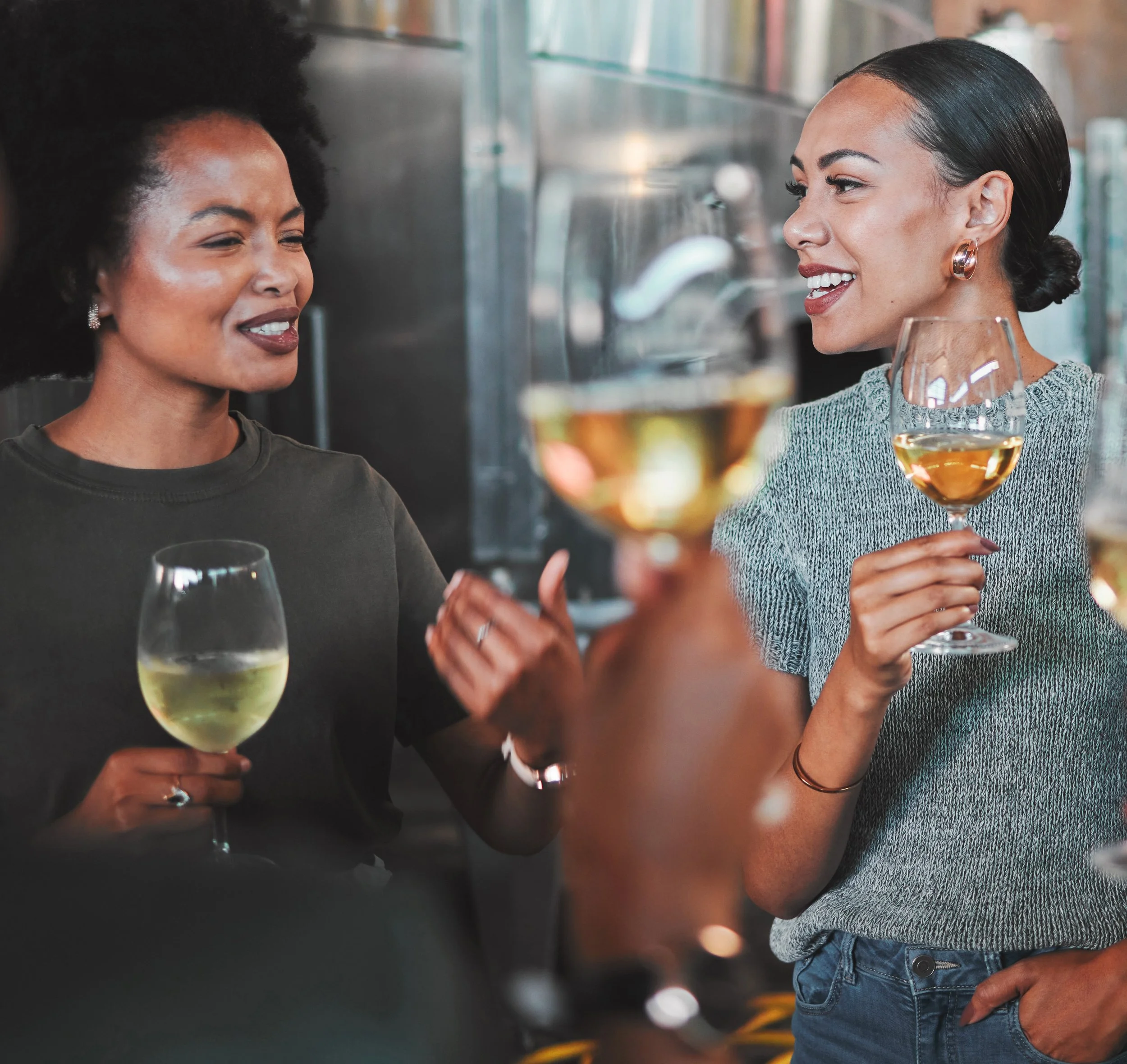How We Talk About Wine
By Tim Powers
What is the weirdest flavor you’ve ever heard someone use to describe a wine? From pencil shavings to barnyard, fresh cut garden hose to bubblegum, wine enthusiasts search high and low to attempt to put words to the vast variety of aromas and flavors present in wine. Although it is certainly important to understand what specific aromas and flavors mean to you, the larger struggle is how to convey what you observe to someone else, and, more importantly, how what you smell or taste translates to what they smell or taste. The language of wine has changed a great deal over the last century, and, while we will always strive to make our language more clear, let’s dive into the history of wine descriptions, and why we use what we use today.
Prior to the 1980s, wine was most often described in terms of character and personality. Instead of comparing the aromas to memorable foods, drinks, or other pungent items, wines were described as robust, brash, seductive, or delicate, with little to no actual agreed-upon or consistent terminology. Although many of these terms are still used today, their subjective, although perhaps poetic, use leaves little concrete notions of how a wine actually smells or tastes. For example, a ‘delicate’ wine could be almost anything, red, white, rosé, or sparkling; a wine with delicate floral notes of rose petal and lychee, however, leads the mind towards a more specific option, in this case most likely Gewurztraminer.
It wasn’t until 1974, when Dr. Ann Noble (PhD in Food Science), was hired by UC Davis to work in their sensory research program, that this generic use of language would change. After realizing the drastically subjective nature of wine descriptions used by her contemporaries, she set forth over the next decade to create what is now recognized as the Wine Aroma Wheel. Using this new system, aromas were broken down into categories, such as ‘fruity’, ‘vegetative’, or ‘earthy’, with more detailed descriptions under each heading. For example, a ‘fruity’ aroma could be broken down into notes of blackcurrant or apricot, whereas an earthy aroma could more specifically be described as having notes of mushroom or forest floor. Although this classification system is the norm in the current wine industry, this was a drastic shift in dichotomy, one with which the wine industry as a whole is still struggling to come to terms.
This friction has most recently been seen in the use of terms such as ‘masculine’ or ‘feminine’ when describing a wine. In the 21st century, these have become increasingly out of date as our and society’s perception of gender identity and performance have evolved. Jancis Robinson herself admits to having used masculine or feminine over 300 times in her tasting notes on her website, poking fun at herself by stating that most of these uses were preceded by the unhelpful epithet, ‘stereotypically’. Although some, such as Neal Hulkower, maintain that these terms are descriptive enough, and allow them to be transported back in time to a specific wine, how helpful is that to someone else? Especially since those terms can mean a myriad of different definitions, and one’s gender identity has no bearing on their palate.
Dr. Noble’s paradigm-altering work has been taken further by numerous other wine institutions. Organizations such as WSET, the Court of Master Sommeliers, and Wine Folly have taken this new ideology and expanded upon it, creating their own categories and lexicons, forever in the search of an agreed-upon specificity in describing wines.
Although Dr. Noble’s Aroma Wheel, and the evolutions thereof, are an obvious improvement to the subjective terms that came before, there is still quite a ways to go in creating a universal wine language. Just last week Commonwealth Wine School hosted winemakers from South Africa who described many of the flavors on a typical aroma or flavor wheel as foreign to them. Furthermore, there are a great deal of differences between the typical palate and flavors used for European or American wine connoisseurs, and that of most other regions around the world. In the Japanese manga ‘Les Gouttes de Dieu’, a Château Boyd-Cantenac 2001 Bordeaux blend is described as a masquerade party, rather than using more common western descriptions of cassis or cedar. Karen MacNeil also touches on this in her book, ‘The Wine Bible’, where she writes that some of her Asian students had never tasted a raspberry or a blackberry before. Are we really creating a universal, ‘objective’, wine language if there are so many regions of the world that are excluded?
Despite the many, many hurdles in creating a truly all-encompassing language to describe wine, it is encouraging to see so many working to bridge that gap. There are a vast array of wine producers, distributors, experts, and enthusiasts working to break down the mysticism of what’s in the bottle, and, though it is a near sisyphean task, it is crucial that we continue. Since we each taste and smell through our own unique senses, and pull upon scent and taste memories from our own unique histories, we will always struggle to perfectly encapsulate our individual experience with wine. It is in sharing our experiences, and our wine, that we bond with others.

